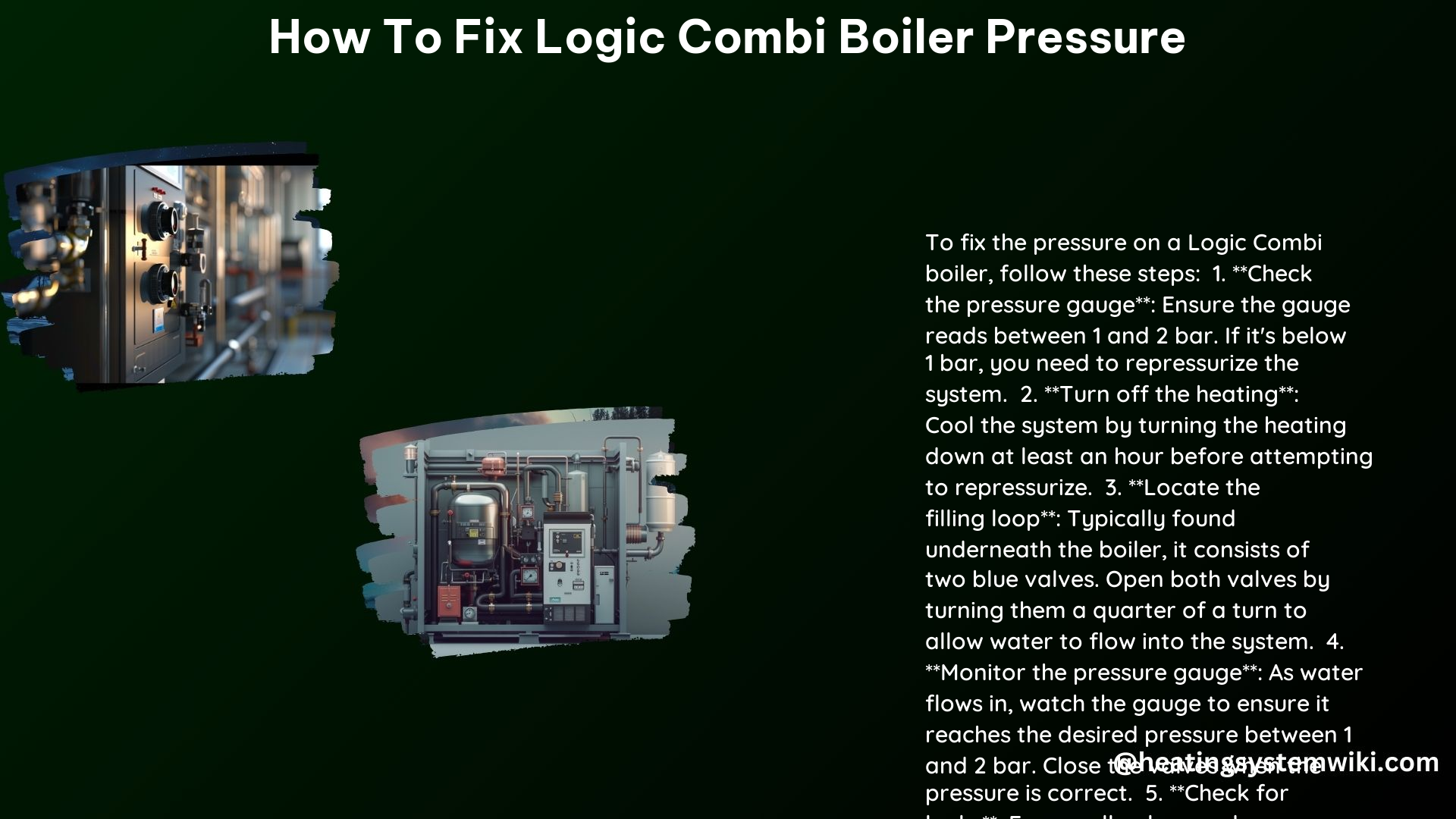If your Ideal Logic combi boiler is experiencing low water pressure, don’t worry – it’s a common issue that can be easily resolved with a few simple steps. In this comprehensive guide, we’ll walk you through the process of troubleshooting and fixing the pressure problem on your Logic combi boiler, providing you with detailed instructions and technical specifications to ensure a successful DIY repair.
Checking the Pressure Gauge
The first step in addressing low boiler pressure is to check the pressure gauge. This gauge is typically located on the front of the boiler and will display the current pressure reading. The ideal pressure range for an Ideal Logic combi boiler is between 1 and 2 bar. If the pressure is below this range, it’s time to take action.
Before checking the pressure gauge, ensure that the boiler is turned off. This will allow you to get an accurate reading without any interference from the boiler’s operation.
Opening the Filling Loop Valves

The next step is to open the filling loop valves, which are the two blue valves (or taps) located at the bottom of the boiler. These valves allow water to flow into the system, increasing the pressure.
To open the valves, turn them a quarter of a turn. This will allow water to enter the system and gradually increase the pressure. Keep a close eye on the pressure gauge to avoid over-pressurizing the system.
Closing the Valves
Once the pressure reaches the desired level of 1-2 bar, it’s time to close the filling loop valves. Turn the valves back a quarter of a turn to secure them in the closed position. This will prevent any further water from entering the system and maintain the correct pressure.
Turning the Boiler Back On
With the pressure adjusted and the valves closed, you can now switch the boiler back on. Ensure that the boiler is functioning correctly and that the pressure remains stable within the 1-2 bar range.
Regular Maintenance
To prevent future pressure issues, it’s essential to have your Ideal Logic combi boiler serviced annually by a Gas Safe Registered engineer. This will ensure that the boiler is operating at its optimal performance and help identify any potential problems before they become more serious.
Checking for Leaks
Leaks in the heating system can also cause pressure loss. Carefully inspect the boiler, pipes, and radiators for any signs of water leakage. If you find any leaks, address them promptly to maintain the correct boiler pressure.
Bleeding Radiators
If the pressure remains low even after adjusting the filling loop valves, the issue may be caused by air pockets in the radiators. Bleeding the radiators can help remove these air locks and restore the proper pressure.
Technical Specifications
- Ideal Logic combi boiler pressure range: 1-2 bar
- Pressure gauge location: Front of the boiler
- Filling loop valve location: Bottom of the boiler
References
- Ideal Heating. (n.d.). Boiler Pressure Too High? Here’s How to Fix It. Retrieved from https://idealheating.com/tips-and-advice/boiler-pressure-too-high-heres-how-to-fix-it
- DIY Stack Exchange. (2016, December 19). Repressurising Logic Combi 24 boiler. Retrieved from https://diy.stackexchange.com/questions/104752/repressurising-logic-combi-24-boiler
- YouTube. (2016, April 28). How to Repair your Ideal Logic Plus Combi boiler. Retrieved from https://www.youtube.com/watch?v=d9-RRcAQGRM
- YouTube. (2022, February 19). Topping up the pressure on your Ideal combi boiler. Retrieved from https://www.youtube.com/watch?v=NbAyo2FJ10s
- YouTube. (2018, October 16). How To Top Up The Pressure On Your Ideal Boiler. Retrieved from https://www.youtube.com/watch?v=1YKLQbKi80U
By following these steps and adhering to the technical specifications, you can effectively fix the low water pressure on your Ideal Logic combi boiler and ensure its optimal performance. Remember to always prioritize safety and consider seeking professional assistance if you’re unsure about any part of the process.
